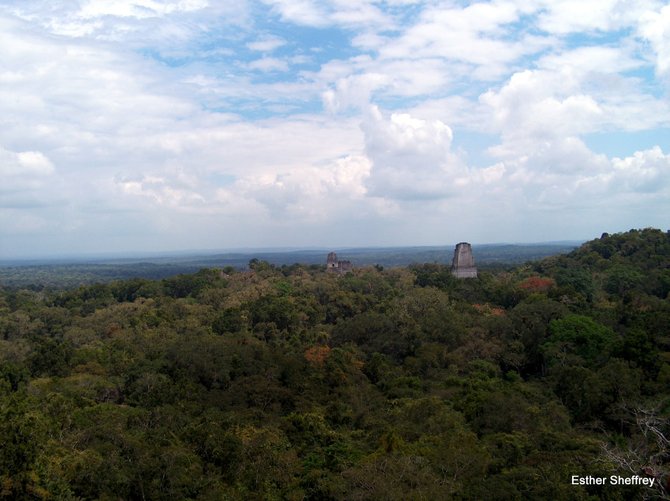 Facebook
Facebook
 X
X
 Instagram
Instagram
 TikTok
TikTok
 Youtube
Youtube

An ancient Mayan civilization inhabited Tikal around 800 B.C., flourishing for over a century amid the subtropical rainforest of El Petén, Guatemala. Their extinction became legendary – a Lost City until the mid-19th century, when a 13-year-long excavation unearthed a structurally innovative development aligned with the stars and planets. Its inhabitants, much like the Egyptians, were clearly mathematically and astrologically advanced.
Most of the terrain remains undisturbed today. The ancient city, surrounded by a canopy of exotic plants and trees, holds abundant potential for future archeological and biological discoveries. There is a mystical silence broken only by birds and monkeys. Written in Spanish, warnings of potential dangers line the paths – “Peligro Cocodrilo” and “Puma” read the small wooden signs.
My tour guide, who was part of the excavation, was like an encyclopedia of botany and Mayan history. My favorite part was the climb up 72 meters on rickety wooden ladders to the top of Temple IV. Unexcavated, its crest protrudes above the jungle. It was a spectacular view and a perfect place to ponder: What did they know that we still do not?


An ancient Mayan civilization inhabited Tikal around 800 B.C., flourishing for over a century amid the subtropical rainforest of El Petén, Guatemala. Their extinction became legendary – a Lost City until the mid-19th century, when a 13-year-long excavation unearthed a structurally innovative development aligned with the stars and planets. Its inhabitants, much like the Egyptians, were clearly mathematically and astrologically advanced.
Most of the terrain remains undisturbed today. The ancient city, surrounded by a canopy of exotic plants and trees, holds abundant potential for future archeological and biological discoveries. There is a mystical silence broken only by birds and monkeys. Written in Spanish, warnings of potential dangers line the paths – “Peligro Cocodrilo” and “Puma” read the small wooden signs.
My tour guide, who was part of the excavation, was like an encyclopedia of botany and Mayan history. My favorite part was the climb up 72 meters on rickety wooden ladders to the top of Temple IV. Unexcavated, its crest protrudes above the jungle. It was a spectacular view and a perfect place to ponder: What did they know that we still do not?
Comments